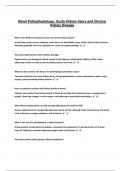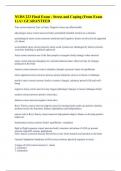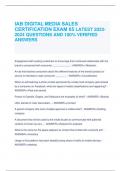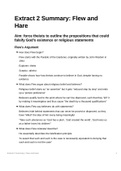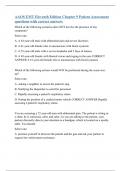Tentamen (uitwerkingen)
Renal Pathophysiology: Acute Kidney Injury and Chronic Kidney Disease
- Vak
- Instelling
Renal Pathophysiology: Acute Kidney Injury and Chronic Kidney Disease What is the difference between acute and chronic kidney injury? Acute kidney injury occurs suddenly, often due to an identifiable cause, while chronic kidney disease develops gradually over time, typically as a result o...
[Meer zien]
